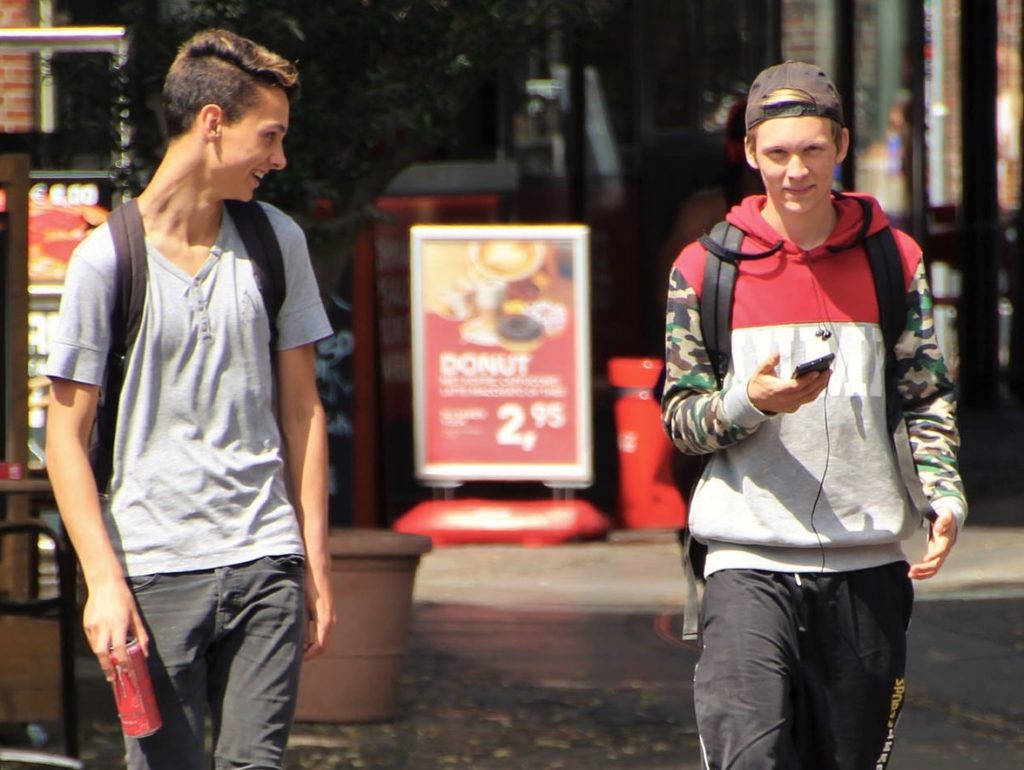
There doesn’t seem to be any letting up in the interest in digital provision of mental health support. As a result, we are seeing more and more research papers evaluating the effectiveness of specific platforms or apps.
Our previous elf blogs on digital health and youth mental health will be useful background reading for those of you new to the field.
A recent paper (Santesteban-Echarri et al, 2017) reports on a moderated online social therapy (MOST) for relapse prevention in depression in young people. MOST involves self-help therapy modules but also a social networking component, including active moderation by clinicians and peer support (Rice et al, 2016).

The moderated online social therapy intervention (entitled Rebound) aims to prevent depression relapse in young people. Cue the basketball photo…
Methods
This paper reports on a qualitative study of the moderated online social therapy, which aimed to explore user experiences. All 42 young people who completed the online therapy took part in interviews. An additional focus group was undertaken with 6 of the participants. The interview data was analysed using thematic analysis.
Results
The authors group their results into three main findings:
- Preferred content/perceived helpfulness (which components did the participants use and find helpful?)
- Interest in social networking
- Protective environment (perceptions of the safety of the platform in terms of confidentiality, worries about cyberbullying etc.)
Of these, number 3 is most interesting to me. There are repeated references to the value of the supportive atmosphere, and perception of respectful and caring communications. This is an important finding simply because it goes some way to refuting the idea that anything online automatically equals hate and vitriol. The latter may be a sad consequence of unmoderated and poorly run services, but isn’t a fundamental feature of ‘being online’, and sensitive design can ensure the opposite.
It demonstrates the value of this particular “blended” approach, with active moderation a critical part of the package. Too often in discussions of blended therapies, researchers seem unable to move beyond a traditional “offline” conceptualisation of the role of the therapist. The support might be providing a certain number of sessions with a professional, in conjunction with the self help materials. By contrast, the moderator approach has considered the specific needs of this online setting, and the format of professional input is tailored accordingly. Hurrah!

The Internet isn’t all hate and vitriol. Sometimes it’s caring, respectful and supportive. Is moderation the answer?
Conclusions
The authors say:
The most striking finding from this data is related to the variability in experiences of usage and involvement in the Internet-based platform. We can differentiate two groups of young people using Rebound; those who engaged through the social networking feature of the site… and another group who did not directly connect with others but instead engaged with the therapeutic content. Developing insights into the motivations underpinning these types of usage patterns may help improve the effectiveness of youth mental health social media-based interventions.
This finding (covering both themes 1 and 2) is of the different strokes for different folks variety; some people like bits other people don’t and vice versa. I’m not sure I agree it’s striking; this is pretty common now in the literature on digital interventions, and I’m also not sure this paper adds much to that particular discussion (more below).

Using blended therapies (offline and online) can provide young people with the right mix of self-help and human support to prevent relapse.
Strengths and limitations
Given the acknowledgement that different people like different things, this calls into question the usefulness of the blunt survey stats, “25% rated this as most helpful” and so on. These might have been more useful if presented matrix-style, looking at where responses correlate or overlap (do people who really like one part really dislike another, in ways that suggest a clear profile of use), or whether there are clear trends based on any demographics. This might then help us show how the differences cluster into profiles of preferences that drive engagement with particular features.
On the whole, even the qualitative thematic findings tended to just be “some said this, others said that” without trying to explore what underpins these differences. This would help in creating understanding to guide development across different platforms and services, as otherwise we risk just having lots of individual papers that report different reactions to specific features of their own package. The authors themselves suggest that understanding the different motivations of those who engage with social networking compared to those who don’t would be helpful. A qualitative study would be an ideal way to do this, but it seems the interviews or analysis didn’t go into this.
One question for a full trial might be whether the platform is effective across these different preferences, or whether one feature is more ‘core’ to treatment being effective, i.e. can the platform be helpful even if people don’t engage with the specific therapy tools? Given how in self-help formats such as this, engagement is so interlinked with effectiveness, could it be that people who can choose what they want to do, and feel supported to do it, show the greatest effect, rather than there being a specific ingredient underpinning the effect?
The intervention to me seems to demonstrate how powerful it can be to use online spaces to facilitate supportive interaction with others, either professionals or peers. For some reason, the authors drop into the conclusions that studying chatbots and natural language processing will be helpful in future. I have no idea why, as this doesn’t seem to sit with the study findings at all. I would much rather that more work continues to think sensibly about how to blend the interactions between peers and professionals into online settings.

We need more digital mental health research that focuses on how to blend the interactions between peers and professionals into online settings.
Links
Primary paper
Santesteban-Echarri O, Rice S, Wadley G, Lederman R, D’Alfonso S, Russon P, Chambers R, Miles CJ, Gilbertson T, Gleeson JF, McGorry PD, A ́lvarez-Jimenez M. (2017) A next-generation social media-based relapse prevention intervention for youth depression: Qualitative data on user experience outcomes for social networking, safety, and clinical benefit. Internet Interventions (2017), doi:10.1016/j.invent.2017.06.002
Other references
Rice S, Gleeson J, Davey C, Hetrick S, Parker A, Lederman R, Wadley G, Murray G, Herrman H, Chambers R, Russon P, Miles C, D’Alfonso S, Thurley M, Chinnery G, Gilbertson T, Eleftheriadis D, Barlow E, Cagliarini D, Toh JW, McAlpine S, Koval P, Bendall S, Jansen JE, Hamilton M, McGorry P, Alvarez-Jimenez M. (2016) Moderated online social therapy for depression relapse prevention in young people: pilot study of a ‘next generation’ online intervention (PDF). Early Interv Psychiatry. 2016 Jun 17. doi: 10.1111/eip.12354. [Epub ahead of print]
Photo credits
- Photo by Annie Spratt on Unsplash
- Steven Depolo CC BY 2.0

[…] Moderated online social therapy: relapse prevention for youth depression […]